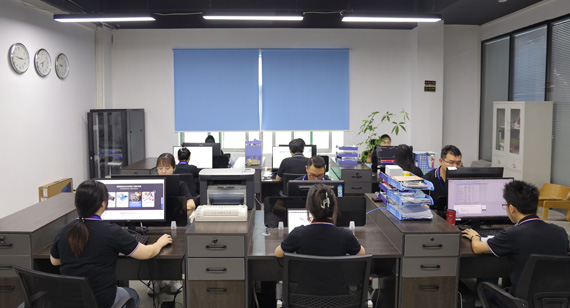15 years one-stop China custom CNC machining parts factory

Hey there I’m VMT Sam!
With 25 years of CNC machining experience we are committed to helping clients overcome 10000 complex part-processing challenges all to contribute to a better life through intelligent manufacturing. Contact us now
 155 |
Published by VMT at Feb 03 2024
155 |
Published by VMT at Feb 03 2024
Introduction:
CNC machined parts find widespread applications across various industries, from mechanical manufacturing to aerospace, and from medical devices to electronic products. As the market continues to expand, customer expectations for product quality have risen, making after-sales issues and complaints a significant challenge for CNC machining manufacturers. This article explores how CNC machining manufacturers can promptly and effectively address after-sales issues and complaints, enhancing customer satisfaction and loyalty.

I. Establishing a Comprehensive After-Sales Support System:
Dedicated After-Sales Department:
Form a specialized after-sales service team responsible for handling customer after-sales issues and complaints. Ensure the team possesses sufficient technical capabilities and expertise for quick and accurate issue resolution.
Multiple After-Sales Support Channels:
Provide various after-sales support channels, including phone, email, and online chat, to facilitate convenient and prompt communication with customers. Ensure customers can easily reach the after-sales department for timely assistance and support.
Building Customer Issue Records:
Maintain detailed records of customer-reported issues to track the progress of solutions and provide a better overall service experience.

II. Swift Response and Issue Resolution:
Timely Response:
Respond promptly to customer after-sales issues and complaints, setting clear response time goals to demonstrate respect and prioritization of customer concerns.
In-Depth Issue Analysis:
Conduct thorough analysis of reported issues to understand the root causes. This analysis aids in developing effective solutions and preventing similar problems from recurring.
Providing Solutions:
Based on the analysis, offer specific and actionable solutions to customers. These solutions should be operationally viable and effective in swiftly addressing customer concerns.
Feedback Tracking:
Track the implementation of solutions, gather feedback on customer satisfaction, and monitor customer opinions. This ongoing feedback loop helps refine the after-sales service system and enhance customer satisfaction.
III. Strengthening Communication and Interaction with Customers:
Proactive Communication:
After resolving issues, proactively maintain communication with customers to understand their feedback and satisfaction with the provided solutions. This fosters increased trust in the manufacturer.
Regular Follow-ups:
Establish a system for regular follow-ups, actively inquiring about product usage and service needs. Through periodic follow-ups, potential issues can be identified and addressed promptly.
Interactive Communication:
Engage with customers through social media, forums, online communities, and other platforms to collect opinions and suggestions. Incorporate this feedback into product improvements and service optimizations to meet evolving customer needs and expectations.
Customer Satisfaction Surveys:
Conduct regular customer satisfaction surveys to assess customer evaluations of the manufacturer's after-sales service and solutions. Tailor improvements based on survey results to enhance customer satisfaction and loyalty.
IV. Optimization of After-Sales Service Processes:
Streamlining Processes:
Optimize after-sales service processes by simplifying operational steps and approval procedures. This improves service efficiency and reduces customer wait and processing times.
Enhancing Service Quality:
Continuously improve the technical capabilities and professional qualities of the after-sales service team to ensure they provide high-quality service support and solutions. Establish effective training mechanisms to regularly enhance the team's skills.
Innovative Service Models:
Explore new service models and technological means, such as remote fault diagnostics and online technical support. Technological innovations improve service efficiency and quality, providing customers with a more convenient and efficient service experience.
Continuous Improvement:
Based on customer feedback and satisfaction survey results, continuously refine and optimize after-sales service processes. Consistent improvement of service quality ensures the manufacturer meets evolving customer needs and expectations.
V. Establishing Effective Customer Relationship Management Mechanisms:
Customer Care:
Strengthen emotional connections with customers through personalized services and care measures. Examples include providing regular maintenance advice, holiday greetings, etc., to make customers feel valued.
Loyalty Programs:
Encourage long-term cooperation and repeat purchases through the establishment of loyalty programs. Offer benefits such as discounts, point redemption, and other incentives to increase customer stickiness and loyalty.
Long-Term Cooperative Development:
Build long-term collaborative relationships with customers, growing together and achieving mutual development. By deeply understanding customer needs and development plans, offer customized solutions and quality service support to help customers succeed in their business goals.
Closed-Loop Management of Customer Feedback:
Establish a closed-loop management mechanism for customer feedback to ensure timely handling and response to customer opinions and suggestions. Through effective closed-loop management, continuously improve after-sales service quality and customer satisfaction.
Sharing Customer Success Stories:
Collect and organize customer success stories, showcasing the manufacturer's capabilities and strengths in solving practical problems. These case studies can include actual production scenarios, industry benchmarks, or success stories from other customers. Sharing success stories enhances customer trust and encourages business expansion.
Organizing Regular Customer Interaction Events:
Organize regular customer interaction events, inviting customers to participate and share experiences. This strengthens connections between customers, promotes information sharing, and facilitates business expansion.
In summary, CNC machining manufacturers need to address after-sales issues and complaints by establishing a comprehensive after-sales support system, responding promptly to issues, enhancing communication and interaction with customers, optimizing after-sales service processes, and establishing effective customer relationship management mechanisms. Through the integrated application of these measures, manufacturers can continuously improve after-sales service quality, earn customer trust and support, strengthen market competitiveness, and achieve sustainable development goals.
Ready To Start Your Next Project?
Get Instant Quote

Request a Free Quote
Send us a message if you have any questions or request a quote. We will get back to you ASAP!